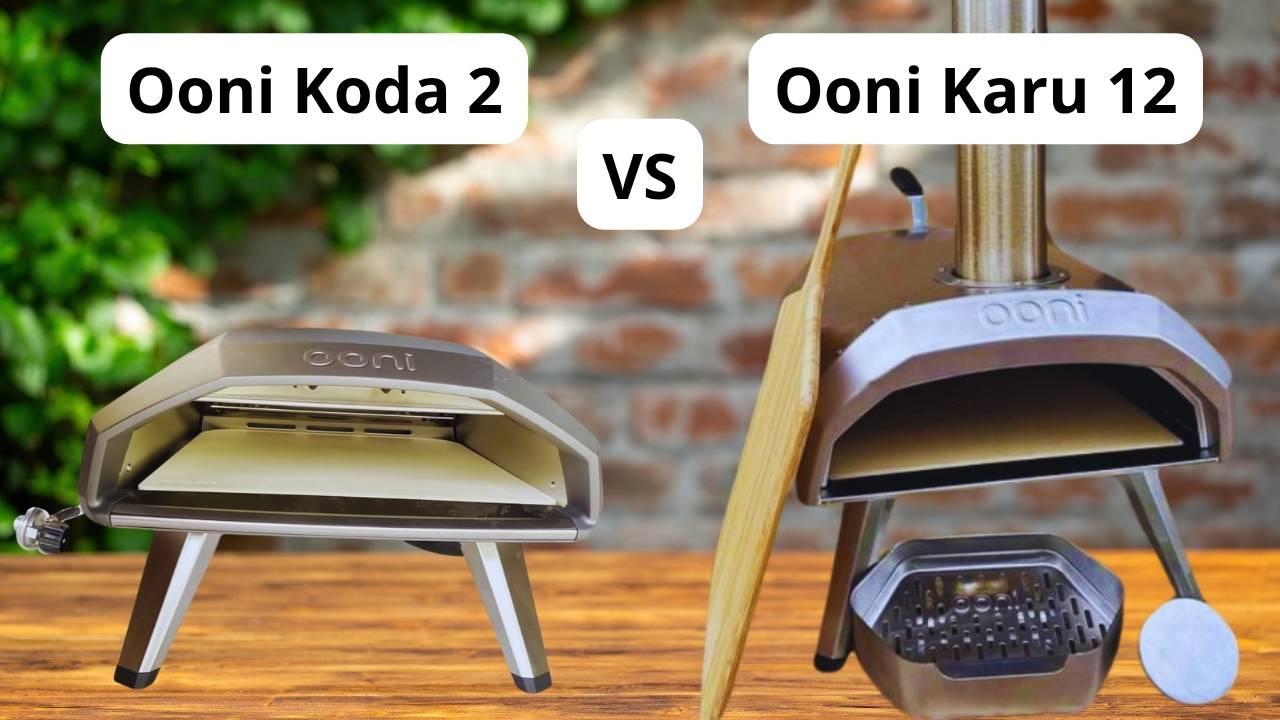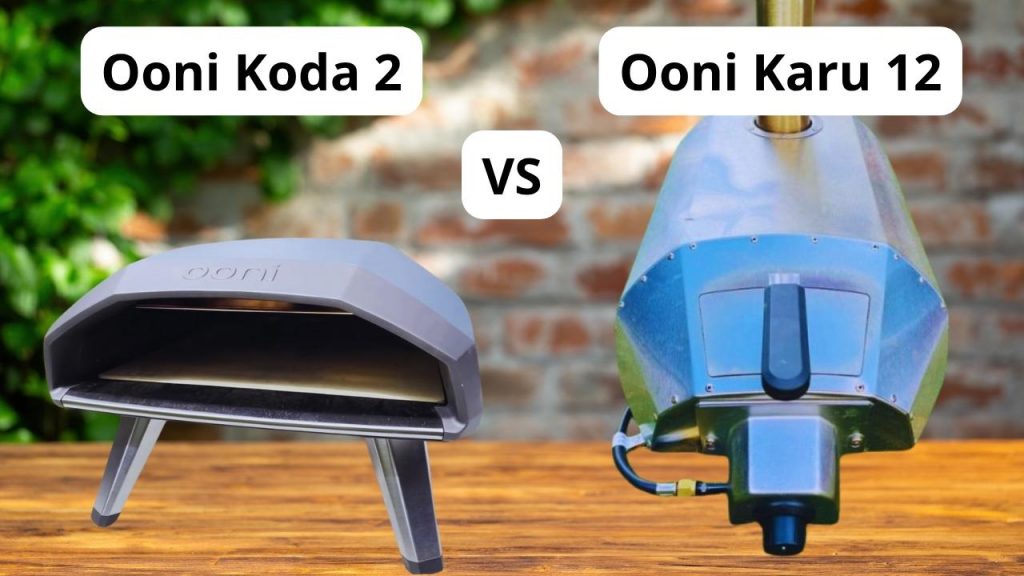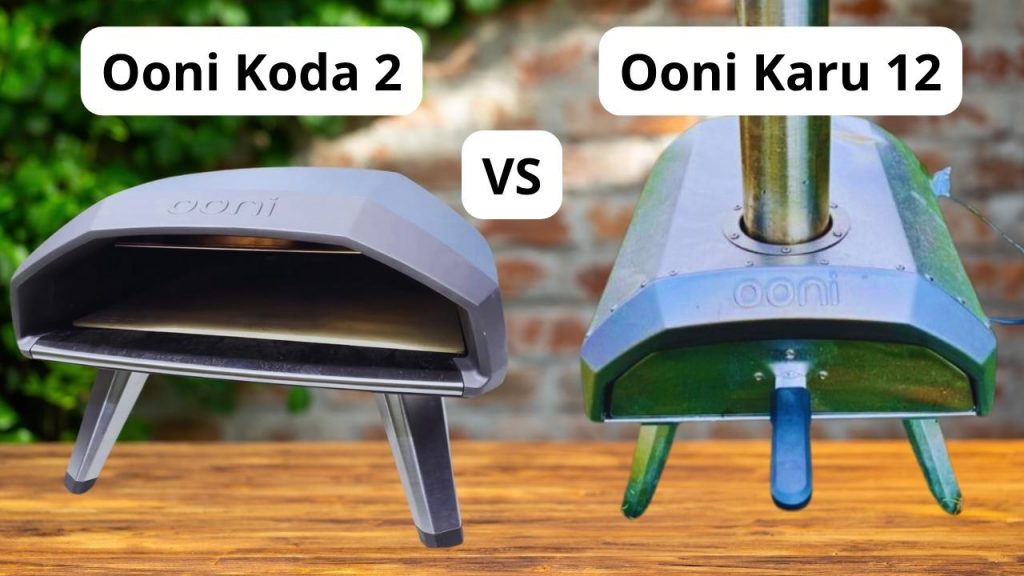As a restaurant chef with over 10 years of experience at Dequte Restaurant LironBoylston, I’ve worked with a wide range of pizza ovens in both professional and outdoor settings. In this article, I’ll compare two popular models I’ve personally tested in my kitchen—the Ooni Koda 2 and the Ooni Karu 12. I evaluated both ovens based on quality and materials, temperature control, shape, first-time usage impressions, power source, size, ease of cleaning, and how they performed in a real pizza cooking test. If you’re curious about the detailed process I follow when testing ovens, check out my in-depth guide: How We Test Pizza Ovens.
The Ooni Koda 2 is Ooni’s newest gas-powered oven, featuring their G2 Gas Technology™ for fast, even heat and a modern, user-friendly design.
The Ooni Karu 12 is a compact, multi-fuel oven known for its flexibility—allowing you to cook with wood, charcoal, or an optional gas burner.
In this write-up, I’ve compared the Ooni Koda 2 and the Ooni Karu 12 in detail, using my testing data.
Just a heads-up: this article contains referral links. If you find it helpful and decide to buy one of these ovens, using my links is a great way to support this blog. I’ll earn a small commission at no extra cost to you, and it helps me continue producing detailed, chef-tested reviews.
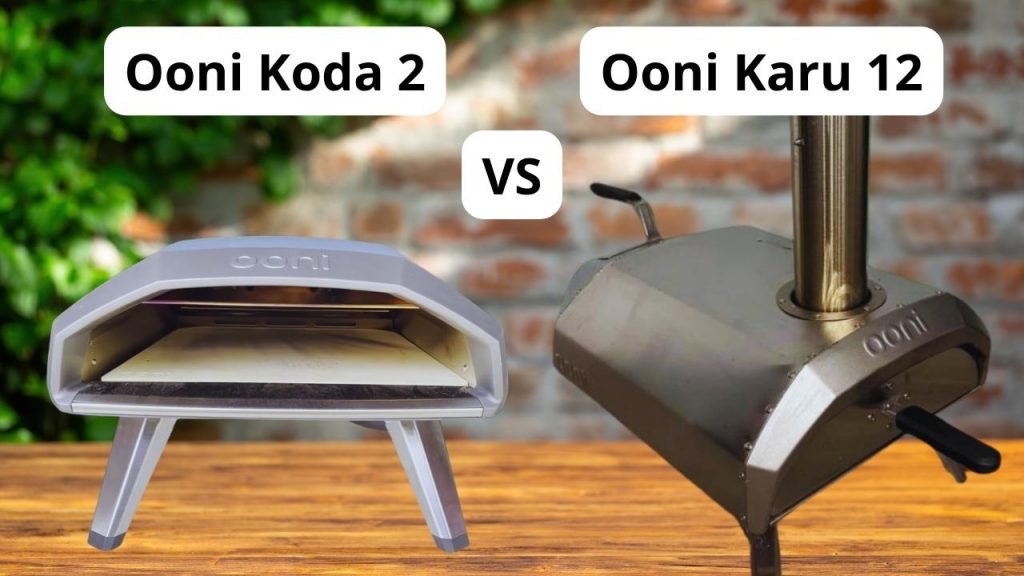
Ooni Koda 2 VS Ooni Karu 12: Quality and Materials
| The Ooni Koda 2 features a die-cast aluminum shell and a 50% thicker cordierite stone than its predecessor. It feels like a premium, modern appliance built to last. |
The Ooni Karu 12 is made of stainless steel and built solidly. It’s rugged, durable, and designed for high heat, with attention to insulation and sturdy components.
|
Ooni Koda 2 VS Ooni Karu 12: Temperature Control
| With its G2 Gas Technology™, the Ooni Koda 2 delivers precise and even heat distribution, reaching 950°F in just 15 minutes with minimal effort or adjustment. |
The Ooni Karu 12 reaches over 900°F using wood, charcoal, or gas, but temperature control requires more skill and constant fire management when using wood.
|
Koda 2 VS Ooni Karu 12: Shape
| The Ooni Koda 2 has a rectangular body with a tapered burner and sealed chamber that optimizes airflow and retains heat for consistent cooking across the stone. |
The Ooni Karu 12 features a dome shape that encourages convection and retains heat well, especially with the chimney design, though some heat escapes during wood use.
|
Ooni Koda 2 VS Ooni Karu 12: First-Time Usage Impressions
| The Ooni Koda 2 is plug-and-play. Setup takes 10 minutes and it’s beginner-friendly, offering quick results with minimal learning curve. |
The Ooni Karu 12 is easy to assemble in about 15 minutes. Using wood adds complexity, but it’s intuitive for users familiar with fire-based cooking.
|
Ooni Koda 2 VS Ooni Karu 12: Power Source
| The Ooni Koda 2 runs on propane only, keeping things simple, clean, and consistent—perfect for anyone wanting quick heat and minimal mess. |
The Ooni Karu 12 supports wood, charcoal, and optional gas. It’s incredibly versatile, offering a traditional wood-fired experience or gas convenience.
|
Ooni Koda 2 VS Ooni Karu 12: Size
| Weighing 35 lbs with a 14-inch stone, the Ooni Koda 2 is still portable, with foldable legs and a compact footprint for patios or camping. |
The Ooni Karu 12 weighs just 26 lbs and supports 12-inch pizzas. It’s extremely portable and great for travel or outdoor gatherings.
|
Ooni Koda 2 VS Ooni Karu 12: Ease of Cleaning
| The Ooni Koda 2 requires almost no cleanup—no ash, no soot. Its pyrolytic cleaning at high temps makes post-cook maintenance quick and painless. |
The Ooni Karu 12 needs regular ash removal and chimney maintenance. Wood use creates more buildup, so it demands a bit more effort after each session.
|
Pizza Cooking Test
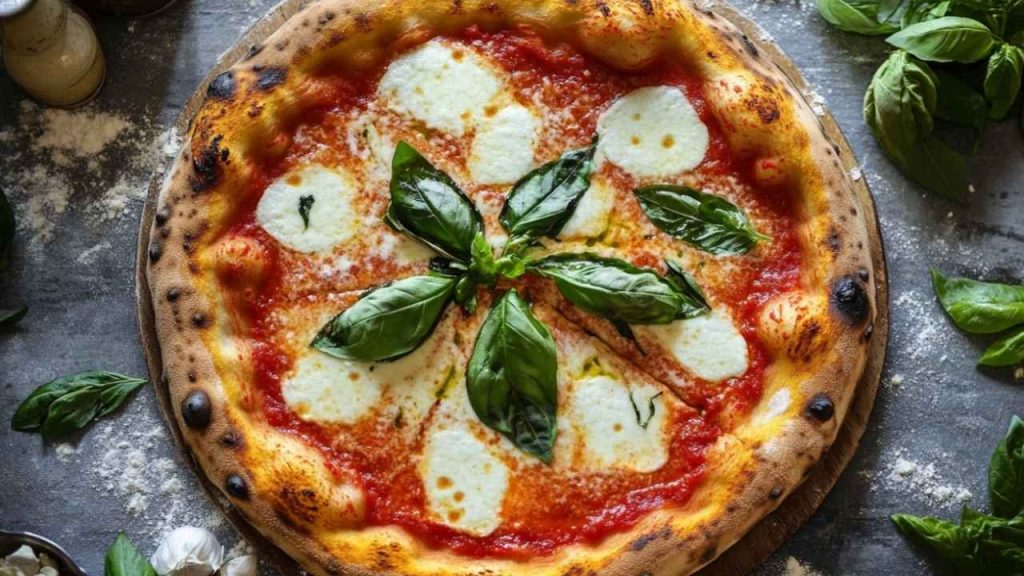
To compare both ovens in real conditions, I tested each using the same classic Margherita pizza recipe in my restaurant kitchen. The Ooni Koda 2 reached its full 950°F in just 15 minutes. Once preheated, I launched a 14-inch Margherita, and it was done in exactly 60 seconds. The crust blistered evenly with no burnt spots, the cheese melted beautifully, and the bottom had a perfect crisp. The even heat distribution of the G2 Gas Technology™ made the entire process smooth, requiring no rotation or adjustments mid-bake. The end result tasted exactly like what I aim to serve in my restaurant—balanced, fast, and flawlessly cooked.
The Ooni Karu 12, fueled with wood during testing, took slightly longer—about 18 minutes—to reach optimal temperature. I cooked a 12-inch Margherita, and it was ready in just under 2 minutes. The crust was golden and had that unmistakable wood-fired flavor that many pizza lovers crave. However, I needed to monitor the flame more closely and rotate the pizza partway through to avoid uneven browning. The final pizza had a delicious rustic touch, but it demanded more hands-on attention to get there.
Both ovens delivered fantastic results, but the Ooni Koda 2 made it easier to get that perfect pizza consistently, while the Ooni Karu 12 offered a more traditional wood-fired feel with a bit of a learning curve.
How We Tested

To provide a fair and consistent comparison between the Ooni Koda 2 and the Ooni Karu 12, I tested both ovens in a professional kitchen setting at Dequte Restaurant LironBoylston, using the same classic Margherita pizza recipe. This allowed me to evaluate their performance using identical dough, sauce, and toppings—removing any ingredient variables.
Each oven was preheated fully, and I used an infrared thermometer to measure real stone temperatures before launching the pizzas. I paid close attention to preheat times, heat retention between sessions, and how evenly each oven distributed heat across the stone and over the toppings.
I also evaluated how much manual input was needed—whether pizzas needed rotation mid-cook, how flame management affected results, and how well each oven handled back-to-back cooks. Ease of setup, fuel handling, and overall user experience were tracked from unboxing to cleanup.
This hands-on testing method reflects how these ovens actually perform in real-world conditions—not just under ideal specs. If you want to dive deeper into the process I use for all my pizza oven reviews, check out my article: How I Test Pizza Ovens.

